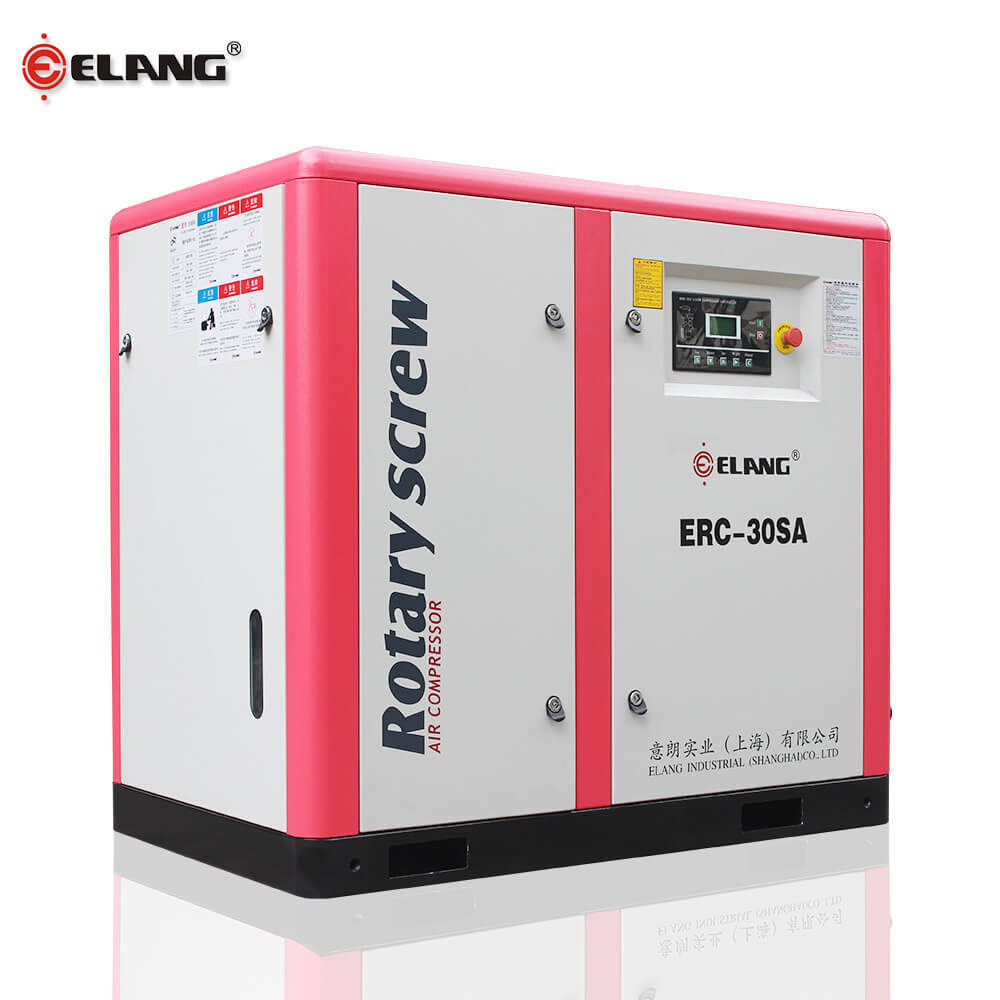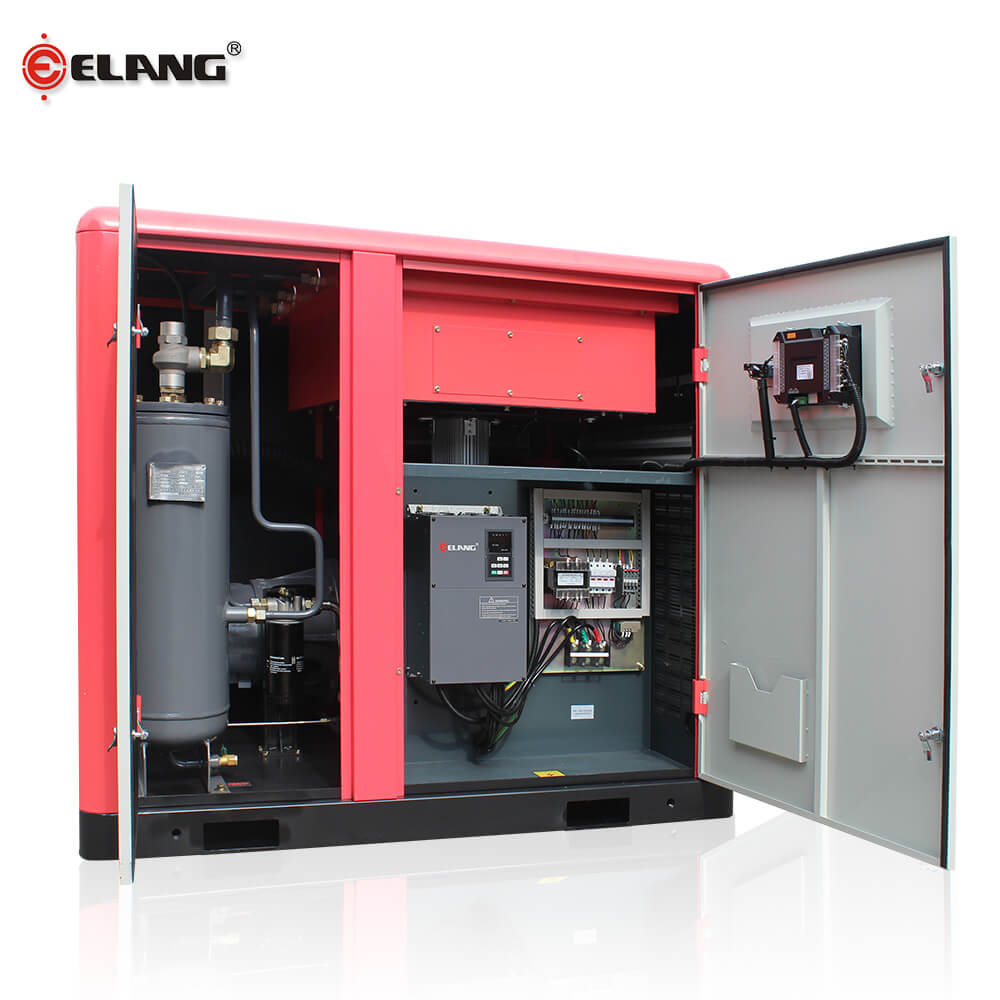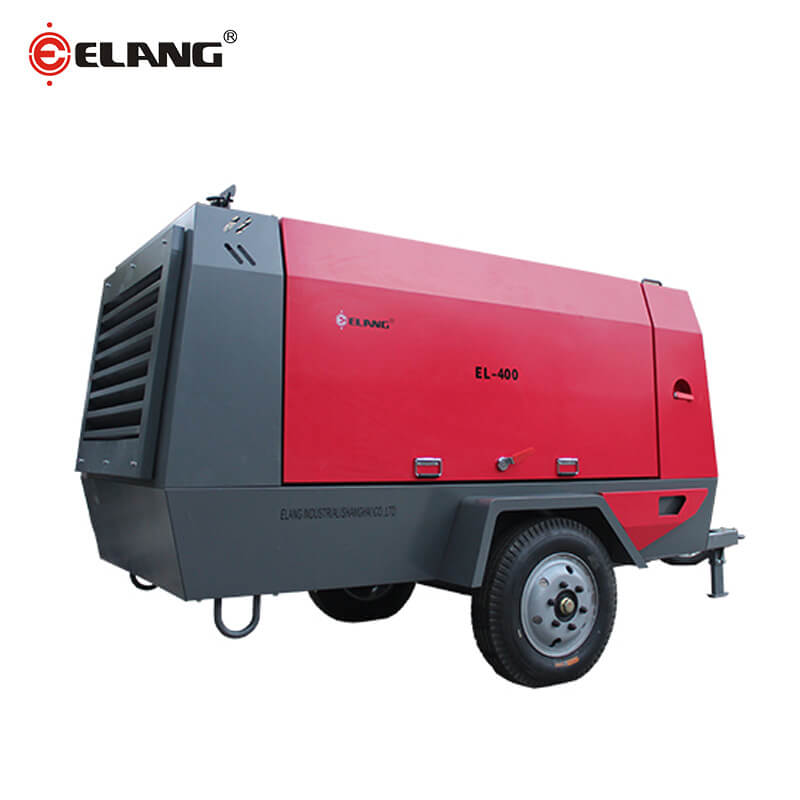-
Working pressure: 7~13bar 100~190psig Air delivery: 2.5~102m3/min 88~3600cfm Working power: 22~560kw 30~750hpdirect driven
-
Working pressure: 7~13bar 100~190psig Air delivery: 0.7~3.8m3/min 25~134cfm Working power: 7.5~22kw 10~30hpcombined
-
Working pressure: 6.5~13bar 95~190psig Air delivery: 0.5~102.0m3/min 17.7~3600cfm Working power: 5.5~560kw 7.5~750hp Frequency range: 40%~100%VSD
-
Working pressure: 6.5~13bar 95~190psig Air delivery: 0.5~102.0m3/min 17.7~3600cfm Working power: 5.5~560kw 7.5~750hp Frequency range: 40%~100%PM
-
Working pressure: 4.0~13bar 58~189psig Air delivery: 9.5~61.9m3/min 335.5~2189cfm Working power: 55~315kw 75~420hptwo-stage
-
Working pressure: 7~35bar 100~508psig Air delivery: 5.0~37.0m3/min 177~1310cfm Working power: 37~447kw 50~600hpportable

How can we extend the service life of air tank?
In the compressed air system, air is sucked into the air compressor through the air filter, compressed by the air compressor to reach the rated pressure, and delivered to the air tank through the exhaust pipe, which is located between the air compressor and the air equipment and plays a role in alleviating pressure fluctuations in the compressed air system. Reserve a certain amount of compressed air, which can maintain the balance between supply and demand, reduce the number of air compressor starts, and at the same time, the compressed air can be placed in the air tank for a period of time, which can effectively reduce the temperature of the compressed air and release the pollution in the compressed air to improve the quality of compressed air supply.
As a storage system in compressed air system, the air tank is an important special equipment to reduce the fluctuation of the compressed air pressure of the system. Its design life is generally 10 years. In the process of daily use, if the working environment is too bad, the operation is not standardized, Irregular maintenance will not only easily lead to failures, but also shorten its service life.
In recent years, we have frequently seen through the Internet media that due to the irregular use of air tanks, the harsh environment, the use of air tanks that are not designed, manufactured, sold, installed, and used according to special equipment, have entered the market, and users choose cheap air tanks. A series of safety liability accidents caused the tank to be scrapped and invalidated during the design life cycle, safety liability problems occurred, the company stopped production and work, caused production liability accidents, led to economic losses, personal injuries, and companies were repeatedly warned or punished.
1. Factors Affecting The Life of Air Tanks
During operation, if the system pressure is controlled too low, it will cause the centrifugal force in the separator to be less than the required centrifugal force of the work. Then the function of the separator will not be fully reflected, which will cause the gas entering the core of the separator in the next stage. The oil content is too high and exceeds its separation range, which leads to incomplete separation of oil and gas, and oil-carrying faults occur in the compressor exhaust process.
(1) Design factors
The design and manufacturing indicators and selection of the gas storage tank refer to GB150-2011 "Steel Pressure Vessel", SH/T3074-2007 "Petrochemical Steel Pressure Vessel", JB/T8867-2015 "Fixed reciprocating piston air compressor "Gas tank" and other related standards are designed and manufactured. Generally speaking, the greater the design pressure, the greater the storage capacity. The greater the wall thickness of the material manufactured; the higher the design temperature, the greater the wall thickness of the material used for manufacturing. In addition, the coefficient of welding joints, openings, pipes, and design corrosion allowances during the manufacturing process of gas storage tanks also have an impact on the final wall thickness. Excluding manufacturing material defects and welding quality defects, the actual wall thickness of the gas storage tank directly affects its service life. Enterprises can use the wall thickness of the air tank as the main reference data for their service life. The use environment of the tank does not meet the design conditions (exceeding the design pressure, exceeding the design temperature, poor environmental conditions, etc.) will also seriously shorten the service life of the air tank.
(2) Material and manufacturing factors
The structure of the air tank is generally composed of upper and lower heads and a middle circular cylinder. If the raw material steel body itself has certain defects or improper selection of materials during the manufacturing process, it will cause uneven wall thickness, mechanical properties below the design value, and unqualified material composition. In the welding process, poor control of the welding process and improper selection of the welding process will result in slag inclusion, pores, undercut, and penetration of the weld, which will seriously affect the service life. Especially after being used for a period of time, after natural corrosion and corrosion, the strength of the tank body is seriously reduced, and the service life is seriously reduced, which does not meet the requirements of safe use.
(3) Use management, maintenance and operation factors
The use and maintenance of air tanks are directly related to the service life of it, and a large part of the shortening of the service life of the tank is related to illegal operation and use. For example, there is no regular maintenance, no special personnel to manage and use, personnel have not been trained, safety accessories are not regularly tested and tested, the oil and water are not cleaned when the machine is stopped, the oil and water content in the air entering the air tank is too high, and the use environment temperature is too low or too high A series of factors such as corrosive gas in the environment will greatly shorten the service life of the air tank.
2. Main measures and methods to extend the service life of air tanks
Submit accurate usage design and usage requirements information when ordering, so that the design of the tank is consistent with the actual use of the site, and avoiding the reduction of the service life of the air tank due to design problems.
Manufacturers are strictly required to manufacture in accordance with relevant national regulations, select well-known brand manufacturers' products, and eradicate various defects in the production process. It is strictly forbidden to knock and knock the tank during transportation and installation.
The ambient temperature for the installation and use of the air tank should meet the design requirements, and when it exceeds the design range, measures for heat preservation or moving to indoor lights should be taken.
The installation and use environment should meet the design requirements to avoid corrosion of the air tank wall caused by corrosive gases in the environment.
Various safety accessories of air tanks should be checked regularly to avoid overpressure work caused by accessory failures in tanks.
When the air tank is connected with other pipelines, a buffer elbow should be added to prevent the pipeline shock or vibration from causing fatigue damage or additional stress to the tank, and shorten the service life of the air tank.
Air tanks should be drained and cleaned regularly to avoid corrosion caused by moisture and oil pollution in the tank and reduce life.
Before the compressed air enters the air tank, install oil and water removal equipment to reduce the corrosion of the tank wall caused by the moisture in the air tank.
The user who has exceeded the design life limit shall apply to the testing agency to inspect the air tank regularly.
The use and management of air tanks should comply with the requirements of the "Fixed Pressure Vessel Safety Technical Supervision Regulations", and operators should be trained and safety education regularly. Operators must be certified to work and should have operating and maintenance accounts.
3. Summary
Due to the irregular selection and use of air tanks, many safety accidents have occurred in recent years, which must be taken seriously from the perspective of users. Air tanks are special equipment, effective safety management measures and standardized use of gas storage tanks to extend the service life of air tanks have attracted more and more attention from departments at all levels. Good working environment, operating habits and scientific and reasonable maintenance can extend its service life to a certain extent.
About Elang:
Product Recommendation:
Company News:
-
Wating to meet you in HANNOVER
Date: Apr 4, 2019
-
Why choose us
Date: Apr 19, 2019
-
Global Recruitment Agency
Date: Jul 19, 2019
-
PTC Asia Invitation
Date: Jul 25, 2019
-
How to Choose the Location of the Air Compressor Room?
Date: Aug 19, 2019
-
How to Arrange an Air Compressor Room?
Date: Sep 4, 2019
-
What are The Precautions for The Connecting Pipe of The Air Compressor?
Date: Sep 16, 2019
-
What are The Requirements for Water-Cooling Air Compressors?
Date: Oct 15, 2019
-
How to Ventilate the Air Compressor Room?
Date: Oct 29, 2019
-
What are The precautions for Installing The Main Circuit Cable of The Air Compressor?
Date: Nov 27, 2019
-
Analysis of Gumming and Carbon Deposit in Screw Air Compressor
Date: Dec 9, 2019
-
Advantages of Elang Oil Free Screw Air Compressor
Date: Dec 16, 2019
-
14 Tips for Compressor Operation
Date: Feb 14, 2020
-
ELANG 200kw Two-stage PM VSD Compressor Loading Flat Rack Container
Date: Mar 3, 2020
-
Why does Two-stage Screw Air Compressor Energy Saving?
Date: May 19, 2020
-
Elang Oil-free Air Compressor for Korean Instant Noodle Factory
Date: May 27, 2020
-
30m3/min 25bar Diesel Portable Compressor Delivery
Date: Jun 1, 2020








